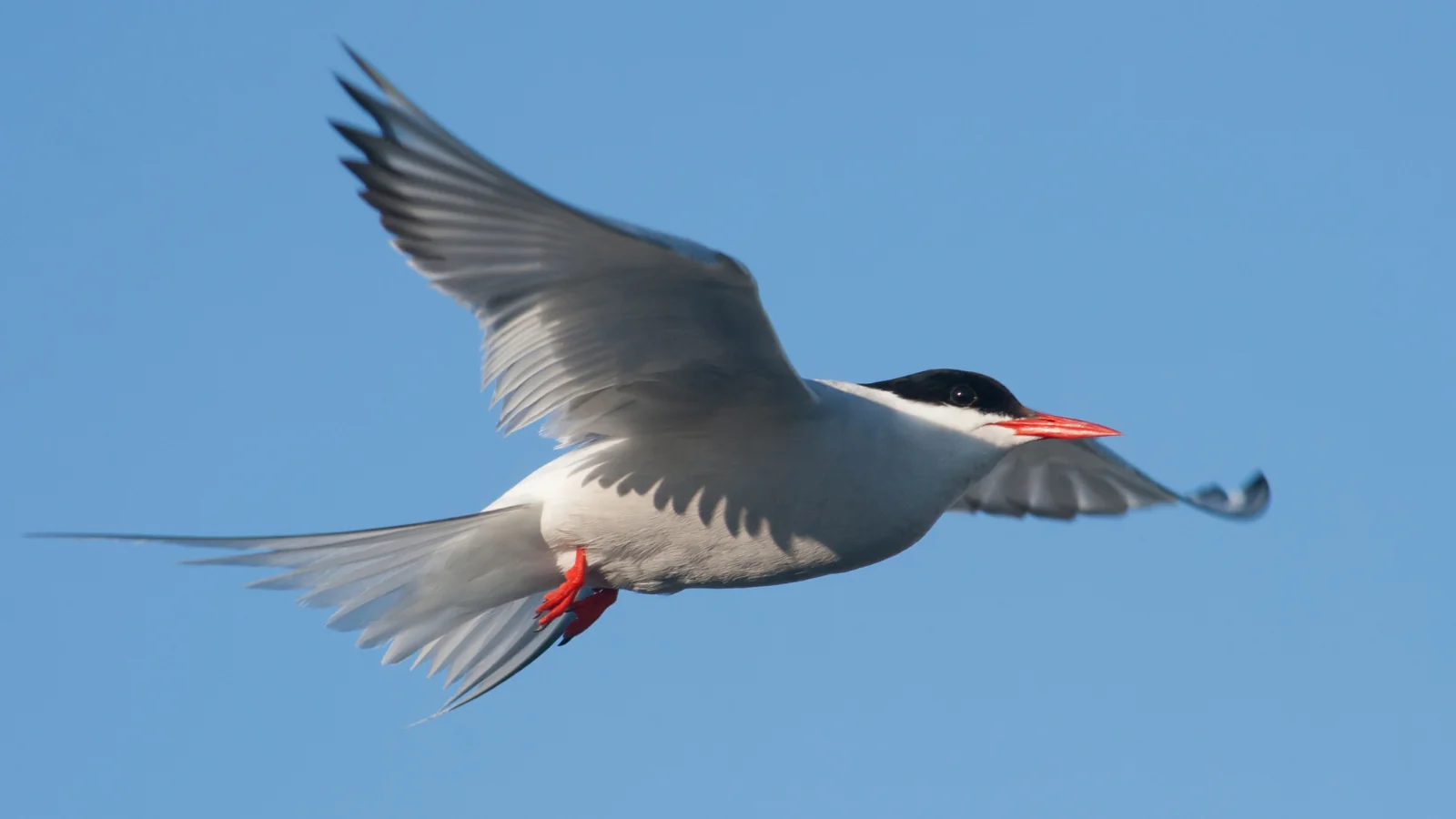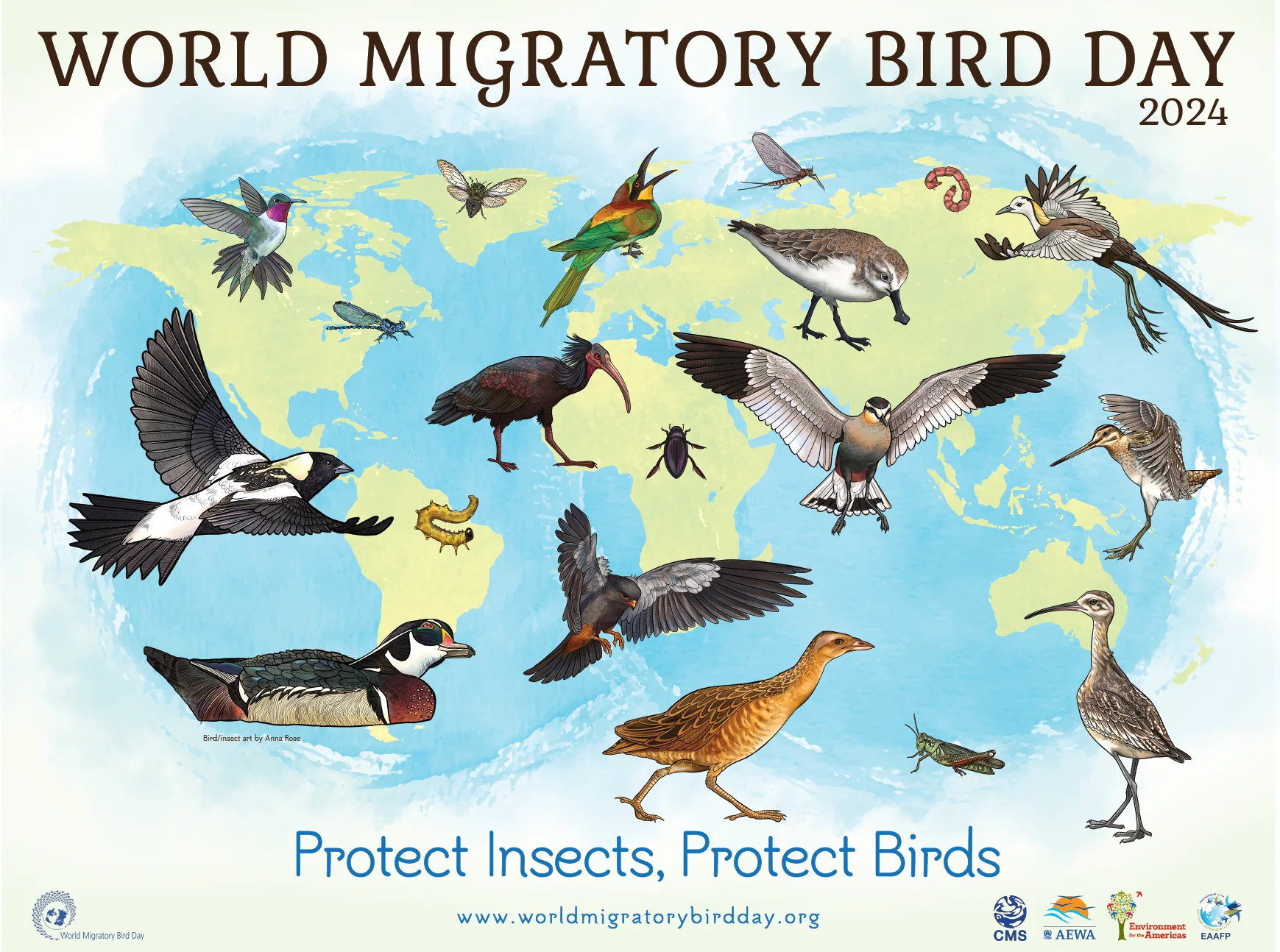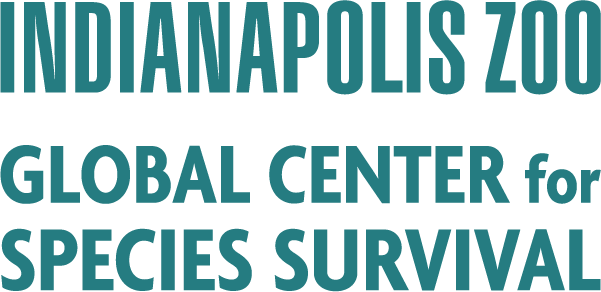
Protect Insects, Protect Birds
Every year, billions of birds make seasonal movements between breeding and non-breeding habitats, from areas of low or decreasing food resources to areas of high or increasing food resources and utilize many other stop-over habitats along the way to refuel.
Several bird species, both large and small, rare and abundant, undertake these remarkable seasonal migratory journeys, with some birds only making relatively short movements e.g. from higher to lower elevations on a mountainside, with others flying a few hundred miles, while still others travel tens of thousands of miles – think Arctic Terns which are reported to make one of the longest known annual migrations, traveling over 40,000 kilometers (about 25,000 miles) from the Arctic to the Antarctic each year.
As we marvel at their remarkable migratory journeys, we are reminded of the interconnectedness of our world. Protecting those connections often involves altering human behavior to reduce the negative impact on wild species and wild spaces. Our local actions can have global impacts. Degrading or destroying habitat in non-breeding or stop-over habitats located tens of thousands of miles away can make it more challenging for birds to complete their migration and successfully reproduce.
For example, expanding and unsustainable agricultural practices, deforestation, and the excessive use of pesticides leading to the loss and/or degradation of tropical habitats—which are important during the non-breeding periods for many temperate breeding migratory birds—means that global populations continue to decline even if lots of resources continue to be dedicated to conservation efforts in their temperate breeding areas, and vice versa. Moreover, urbanization and the anthropogenic challenges of light pollution, dangerous buildings, and other man-made infrastructure further make the migratory journey even more hazardous. Lights can disorient and attract migrating birds into urban areas and cities in breeding, non-breeding, and stop-over habitats. Urban environments add to the hazards of migration as billions of birds are killed in urban environments either due to collisions with buildings and other man-made infrastructure or by feral and roaming pet cats.
The theme for this year’s World Migratory Bird Day (WMBD) is “Protect Insects, Protect Birds.” Insects are a vital energy source for birds, and global declines in insect populations are reflected in the decline of bird populations. This year’s WMBD theme must therefore further remind us about the delicate interconnectedness between all species and how this dependence and interspecific interactions are critical for proper functioning of the ecosystems, the services that ecosystems provide, and how immensely important the health of these ecosystems are for human well-being.
Protect Insects, Protect Birds
Bird migration is a natural phenomenon that has captured the imagination of people across cultures for centuries. These annual journeys involve the mass movement of birds across vast distances, often spanning continents, and are driven by a combination of instinct, environmental cues, and survival strategies. Migration is a complex behavior that serves various ecological, evolutionary, and survival purposes. Yet, the very phenomenon of bird migration is under threat, particularly due to declining insect populations, upon which many migratory birds rely for sustenance.
Insects provide essential energy for migratory birds, offering a rich source of nutrients critical for their survival. They rely on insects for energy during migration and other stages of their life cycles, especially when feeding their offspring. However, the massive decline in insect populations in many parts of the world is having serious implications for migratory birds. This year’s World Migratory Bird Day will therefore shine a spotlight on the interdependence between insects and birds, urging action to protect insects as a means to safeguard avian populations.
The campaign will explore the intricate relationship between birds and insects, and highlight the challenges faced by both as well as actions people can take to address the threats and halt the decline in insects. Below you will find a set of key messages and recommended actions and conservation measures which will be promoted through this year’s campaign.

So, as we celebrate the wonderful phenomenon of bird migration this October, it is a good time to consider a few things that we can do to make our local environments better for birds and other wildlife:
- Whether around your home or as part of large habitat restoration efforts, plant or support the planting of native plants to provide food and shelter for birds and the insects that many of them depend on.
- Minimize the use of pesticides and chemicals that can harm birds directly or indirectly if they eat contaminated seeds or prey. Also, consider buying certified products and food grown without artificial chemicals.
- If you own pet cats, consider keeping them indoors or creating an outdoor enclosure, such as a “catio.” Not only will you protect birds and other small creatures, but also keep your cats healthy and safe.
- Reduce the negative impacts of light pollution by turning off non-essential lights from 11 p.m. until 6 a.m., especially during critical bird migration periods during fall and spring. Also, consider turning off or dimming interior home lighting or drawing blinds to prevent light from escaping. Consider full cutoff light fixtures or motion sensors on outside lights to minimize use. To prevent daylight collisions, use bird-friendly products for windows.
- Finally, consider joining a local birding project or becoming a community scientist to help monitor birds and generate information that helps us better understand how birds are faring and where we need to focus conservation efforts.
Fore more information, you can visit the following websites:
- World Migratory Bird Day 2024
- 7 Simple Actions to Live Bird-Friendly
- The Basics of Bird Migration: How, Why and Where
This blog was a collaboration between experts at the Global Center for Species Survival, including Bird Conservation Coordinator Dr. Sam Ivande.
Published October 4, 2024

